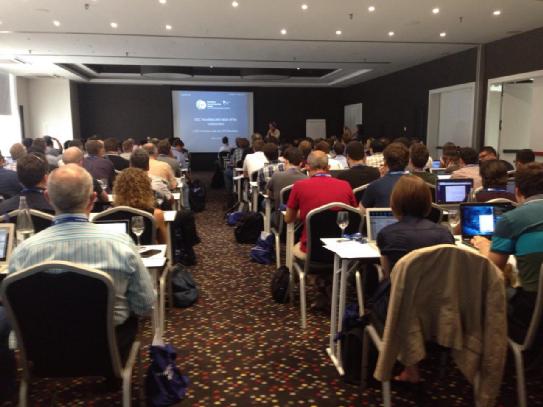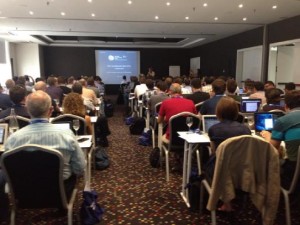Top researchers from six of the largest supercomputing centers got together in Barcelona at the beginning of this month for the Joint Laboratory for Extreme‐Scale Computing (JLESC) to discuss the challenges for future supercomputers. Marc Snir highlighted US Government programs to promote new supercomputing systems; Thomas Lippert discussed the EU Flagship ‘Human Brain Project’; and Akira Ukawa explained the point of view from Riken, Japan’s largest research institution.
Overcoming the monumental challenges that face the HPC on the road to exascale will take a concerted effort from the entire industry as demonstrated by events such as JLESC and PRACE Days, which was held in Dublin at the end of May.
Both focused on understanding the challenges around designing both software and hardware for these extreme scale systems and provide a forum for industry experts to discuss potential solutions and ideas for the future of the HPC industry.
A series of reports on the PRACE event can be found on this website starting with a focus on the kind of software that will be needed for exascale and why it will be largely open source in the early years of exascale computing. The final report from the PRACE conference ‘How Japan promotes the use of HPC’ highlights the view of HPC from the eyes of Masahiro Seki, president of the Research Organization for Information Science and Technology (RIST) in Japan.
The JLESC workshops started with two keynotes focusing on US and European Union strategic governmental programs to boost research and supercomputing, and a third one on the point of view of Riken’s Advanced Institute for Computational Science, in Japan.
The first keynote was given by Marc Snir, from Argonne National Laboratory (US), who talked about the progress of the US Department of Energy program to build state‐of‐the‐art supercomputers together with industry.
The second, by Thomas Lippert, Head of Jülich Supercomputing Centre in Germany, explained the progress of the Human Brain Project, one of the European Commission research flagships, together with Graphene based research. Finally Akira Ukawa, deputy director at Riken presented Riken’s perspectives on the current state of HPC. The meeting continued with technical sessions on five main topics: application and numerical libraries, parallel programming, runtime and tools, resilience, Big Data, I/O and visualisation and the use of cloud for HPC.
The Joint Laboratory for Extreme Scale Computing includes researchers from the French Institut National de Recherche en Informatique et en Automatique (INRIA), the University of Illinois at Urbana‐Champaign’s National Center for Supercomputing Applications (US), Argonne National Laboratory (US), Barcelona Supercomputing Center (Spain), Julich Supercomputing Center (Germany) and Riken/AICS (Japan).
This story appears here as part of a cross-publishing agreement with Scientific Computing World.





